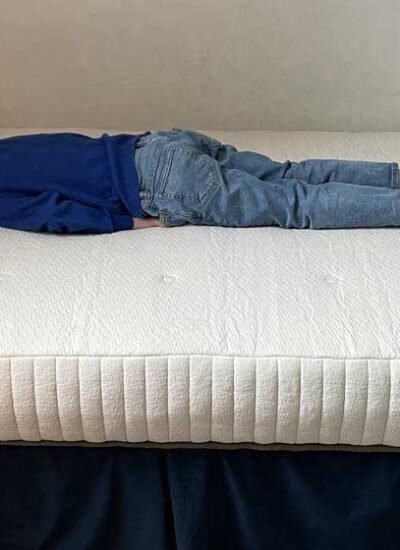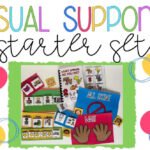Introduction
Quality sleep is essential for every stage of life—but the qualities that make for a restful night’s sleep change as we age. Whether outfitting a room for a toddler or a senior, it’s important to match a mattress to each person’s evolving sleep needs. One of the best options for versatility and space-saving design is a twin-size mattress. When choosing between twin sized mattresses, pay close attention to firmness, durability, and special support features that make these beds functional and comfortable for all ages.
Mattress needs are not one-size-fits-all. A child needs firm support for safe sleep, teens need adaptive comfort, and adults and seniors seek support with pressure relief to reduce joint pain and stress. Understanding these needs helps provide restful sleep, prevent aches, support posture, and avoid sleep disorders. Focusing on materials, structure, and comfort allows choosing the best mattress for each age and future needs. Here’s how to select the perfect twin mattress for every age group and key features to consider.
Infants and Toddlers: Safety and Firm Support
For little ones, safety is the top priority. A twin mattress intended for infants and toddlers should be extra firm with a flat, even surface to mitigate suffocation hazards and lower the risk of Sudden Infant Death Syndrome (SIDS). As children transition out of cribs, maintaining strong support is equally essential for spine alignment and overall safety. Removable, washable covers are helpful at this stage due to frequent spills and accidents.
According to the Sleep Foundation, certified materials and clear safety standards are key considerations when selecting a mattress for younger children.
Children and Preteens: Balancing Comfort and Support
As children grow, their mattresses should evolve with them. For school-age kids and preteens, a medium-firm twin mattress offers the right mix of cushioning and stability for proper development. Kids in this age group often use their beds for much more than sleeping—they’ll read, play, and jump on them, so durability and stain resistance are crucial. A robust mattress made from high-density foam or supportive innerspring helps stand up to daily activity and delivers years of comfort. Selecting a mattress with a removable cover helps maintain hygiene as well.
Teenagers: Adapting to Growth Spurts
Teenagers experience significant changes in height, weight, and sleep patterns, necessitating the use of mattresses that provide targeted support and pressure relief. Memory foam and hybrid mattresses are ideal for restless sleepers and those prone to tossing and turning. Breathable or gel-infused models are recommended for better temperature regulation. These mattresses help teens achieve deeper, more restorative sleep, as noted in the Sleep Foundation guide.
Adults: Personalized Comfort and Support
Sleep needs become more individualized in adulthood. Adults should consider their preferred sleeping position (side, back, or stomach), body type, and any health issues like back pain or allergies. Memory foam is popular for its pressure-relieving qualities, while innerspring mattresses appeal for their robust support and classic feel. Adjustable firmness and hypoallergenic materials can further enhance comfort and longevity, particularly for those who share a bed or have sensitive skin.
Seniors: Prioritizing Pressure Relief and Accessibility
As the body ages, issues like arthritis and joint pain can impact sleep quality. Senior sleepers benefit from mattresses offering advanced contouring, targeted cushioning, and ease of accessibility. Hybrid and latex mattresses often strike the best balance of support, responsiveness, and breathability for older adults. Edge support is especially useful for safe bed entry and exit, and adjustable bed frames can provide customized elevation to aid in circulation and comfort.
Essential Mattress Features Across All Ages
- Firmness Options:The optimal firmness varies—firmer for children and softer for seniors—so look for mattresses with adjustable firmness or consistent support.
- Quality Construction:Mattresses built with premium materials and reinforced edges stand up to heavy use and daily wear, an important feature in family homes.
- Motion Isolation:Helps minimize disturbances from restless sleepers, benefiting teens, couples, or siblings sharing a room.
- Breathability:Features like ventilated foams and moisture-wicking covers maintain a cool and comfortable sleep environment across age groups.
Tips for Multi-Generational Households
- Consider Separate Spaces:Assigning individual bedrooms, where possible, tailors sleep environments to distinct schedules and preferences.
- Adjustable Frames:These frames benefit seniors needing elevation for health reasons and teens for activities like reading or studying in bed.
- Use Toppers Strategically:A mattress topper adds or subtracts softness, allowing each user to fine-tune comfort as their needs evolve—ideal if sharing a mattress or needs change frequently.
- Communicate Needs:Having open conversations about mattress comfort and sleep habits ensures everyone gets the best rest possible, especially during life transitions like puberty or aging.
Investing in the right mattress for each age group isn’t just about comfort—it’s about ensuring lasting health, development, and peace of mind for everyone in your family. By evaluating evolving needs and prioritizing quality features, you can provide a sleeping solution that adapts as your loved ones grow. For an extensive selection of twin-sized mattresses that fit every stage of life, explore the online options available today.





Leave a Reply